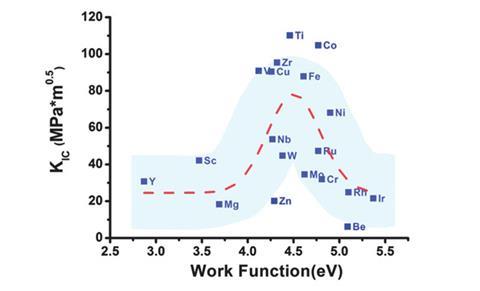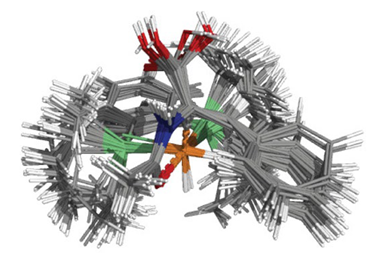Surface property calculations provide a link between the electron work function and toughness of transition metals

Researchers in Canada have correlated the material properties of transition metals with their electron work functions using computational techniques.
The mechanical properties of a material are important, both for improving the fundamental understanding of the material itself, and for selecting and developing materials. Many scientists have studied how bulk properties relate to electron behaviour, using quantum mechanics, but such theories are tricky to apply.
Upon realising the need for a new predictor of mechanical properties, Dongyang Li and co-workers at the University of Alberta studied how the electron work function (the minimum energy needed to move an electron from a solid to a point in the vacuum outside its surface) correlated with a transition metal’s ductility and ability to resist fracture. In their latest study on the relationships between the electron work function and material properties, Li found that there was a critical work function at 4.6 eV corresponding to a maximum material toughness. He explains that ‘toughness is a measure of energy absorbed before failure, which is a product of strength and ductility. Since material strength is increased generally at the expense of ductility and a higher work function corresponds to a higher strength, there is thus a critical work function.’
However, not everyone agrees that the work function can provide such reliable mechanical information. Aron Walsh, a materials theoretician at the University of Bath, says that ‘work functions vary greatly with the surface termination due to electrostatic effects … A robust theory connecting equilibrium properties to fracture toughness would be highly beneficial for less invasive testing.’ Li recognises that surface state indeed influences the work function, but argues that it ‘fundamentally reflects the atomic interaction or bond strength and is thus related to bulk properties’.
In future work, Li hopes to discover links between the electron work function and other properties, as well as extending the current findings to multiphase materials.
References
This article is free to access until 9 March 2016
Guomin Hua and Dongyang Li, Phys. Chem. Chem. Phys., 2016, DOI: 10.1039/c5cp04873g












No comments yet